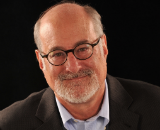 Steve Goldstein was EVP of Saga Communications for nearly three decades. He left Saga in March to start Amlifi, a new podcast network. this column was originally published on Blogstein, the Amplifi blog.
Steve Goldstein was EVP of Saga Communications for nearly three decades. He left Saga in March to start Amlifi, a new podcast network. this column was originally published on Blogstein, the Amplifi blog.
Some would argue right now is the golden age of television with HBO, Netflix, Amazon and countless cable TV channels trumping the big four networks with quality programming. That may indeed be true; I for one can’t keep up with all of the “good” hows out there. If this is the golden age, then this profound comment from Jeffrey Cole a research professor and head of the Center for the Digital Future at USC may have captured what is occurring in the TV business better than anything else I have read:
“No one watches crap on TV anymore.”
This is certainly the golden age of viewer empowerment. More than ever, viewers control their own TV experience. They can choose what they want to watch, when and where with greater ease than ever.
Adweek calls it the era of “purposeful viewing,” and that describes it well. It is a world of “self-scheduling.” And that means no one is going to sit through something they think is crap. We used to turn on the TV and go into browse-mode hoping to find something good. Today, no one cares about TV Guide and the programming grid we all grew up with. Video on-demand is becoming more and more prevalent, especially as the demos skew younger. In fact, the major networks are off 13% in the first quarter of this year.
The technology is becoming easier to use with DVR’s, tablet computers, game consoles, smartphones, smart TV’s and other streaming devices.
Connected devices are having the same impact in the audio world. Now people don’t have to sit through the “Crazy Ira and The Douche” morning show (thanks to Carolyn Gilbert at Nuvoodoo for that gem) on their way to work or wait patiently for their favorite song. Smartphones tethered to automobiles are now light years more simple, and simplicity is the “X” factor that makes audio on-demand work.
When we first did road shows with investors while taking Saga public some 20 years ago, we were asked what would disintermediate radio stations from listeners. We used to joke that unless someone had a very long cable to connect to a car, the radio business was pretty safe from large-scale disruption. That feels different in a world of self-scheduling.
Now don’t get me wrong, I don’t think radio is going away. Far from it. But there is no denying that people like to choose and schedule their own television programming, and it is completely intuitive that it will be the same in the world of audio.
Bottom line — no one will have to listen to crap anymore.
